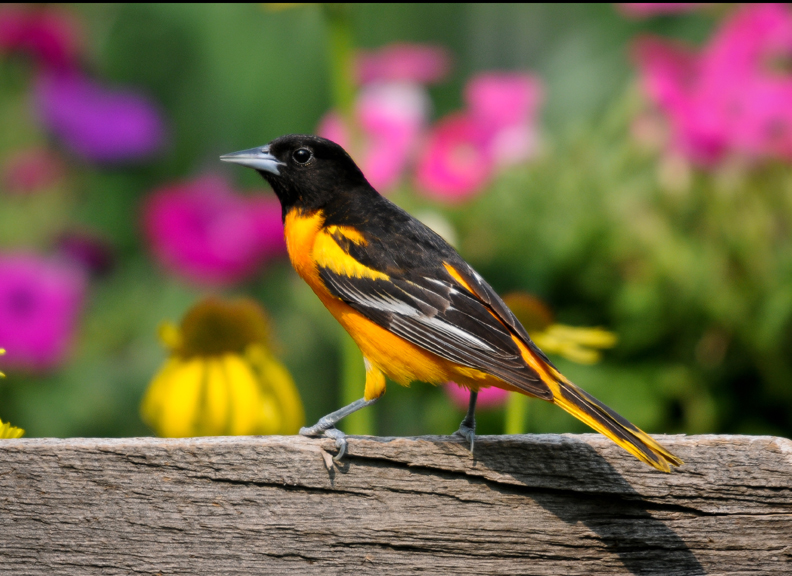Photo by Bob Schifo
In May it was fun to walk the neighborhood and hear Baltimore orioles giving their clear, whistled “tea dear dear” songs.
My husband and I enjoyed chatting with our neighbors about these gorgeous birds that live thousands of miles away in Central and South America in the winter. The males wear bold black-and-orange plumages, while the females are yellow. The female builds a hanging pouch-like nest from 25 to 90 feet above ground. She lines it with grasses, rootlets and soft twigs. Sometimes she’ll take human offerings such as pieces of yarn and string.
We’ve also encouraged some folks to put out grape jelly for the orioles, which attracts them during migration. Sometimes we see three, four, or more orioles at the feeders during spring. Some folks also put out oranges, but we have more luck with the jelly. The orioles don’t feed grape jelly to their young, but rather insects they find in the wild that give the nestlings protein they need to grow. Occasionally after the young fledge, an oriole might bring one to a feeder.
Some folks think it’s best to take away the grape jelly during nesting season, but I don’t think it harms the birds—and with this drought, it might give some needed moisture to the adults. Also, orioles eat berries such as mulberry and elderberry, so jelly is very close to what they eat in the wild. In fact, it’s nice to have some berry-producing trees and shrubs in your yard to give the orioles and other birds some food during fall migration. We do take the jelly in every night, otherwise raccoons raid the orioles’ breakfast. You have to be careful what and how you feed birds so as to not attract pests like raccoons.
Now it’s June and some orioles are still in the neighborhood, singing and raising a family. While some Baltimore orioles seen in spring continue farther north to breed, others stay right here through early fall to raise a family in deciduous trees, especially cottonwoods. Each summer, my husband walks the neighborhood with me and points out an oriole nest in a tree. At certain times of the breeding season, the orioles may be a little quieter as the eggs hatch and the young demand care. I know there’s a pair nesting near my yard because I’ve heard them sing and have seen them on our jelly feeders having a snack, nearly every day in June.
There’s another kind of oriole that comes by in spring to grape jelly feeders, too. It’s called an orchard oriole—they don’t nest in neighborhoods much and aren’t as plentiful as Baltimore orioles up here in northern Illinois. Next year when spring comes, I’ll write about the differences between these two bird species. But for now, listen for the orioles in the neighborhood and see if you can spot a nest. By the way, the females sing, too—something I recently learned—and that’s very unusual for the avian world. There’s always more to discover about wildlife right in the neighborhood.

